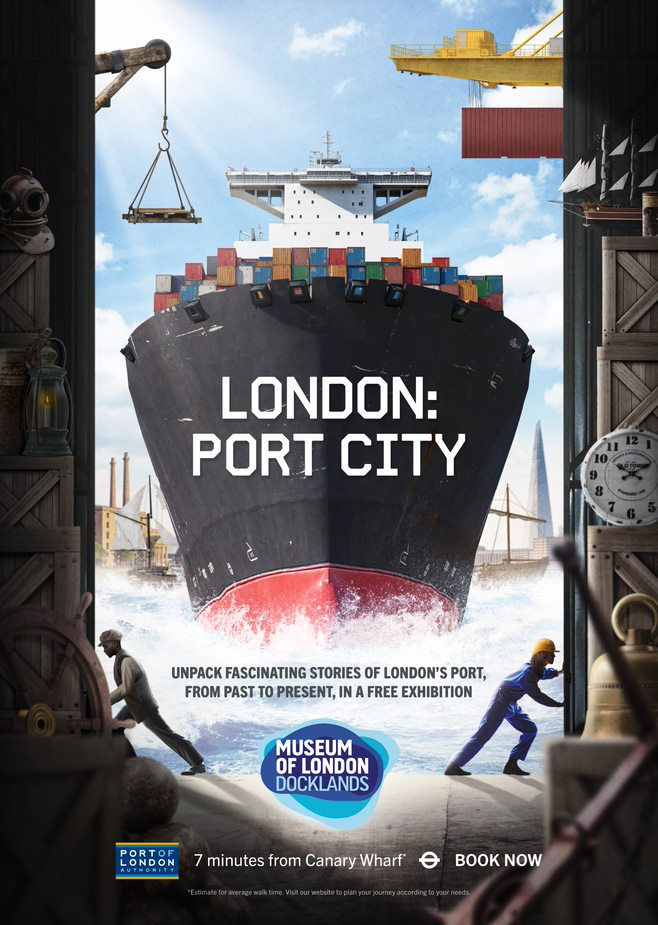David Allsop, Port of London Authority (PLA) assistant harbour master, looks at the organisation’s role, keeping all river users safe and protecting the river environment.
With a geographical remit stretching 95-miles from Teddington in the west to the coast, the PLA is responsible for managing the safety of navigation, conserving the Thames, protecting the environment and promoting the river for business and leisure.

A bit of history
The organisation was created in 1908 by an Act of Parliament, to bring order to the chaos which then prevailed in the Port of London. The Port of London Act 1968 updated our duties and powers and has been amended several times over the years since.
Keeping up to date
Currently, the Marine Management Organisation (MMO), is consulting on an application we have made for a Harbour Revision Order (HRO), to further update our powers, to reflect the modern world. You can read all about the proposed changes on our website. The closing date for comments to be made to the MMO is 12 October.
London: Port City
Last year, we returned to the top position in the table of the UK’s largest ports, handling 47 million tonnes of cargo, en route to and from all corners of the globe. The cargo passing through the Thames is made up of containers, including refrigerated and other speciality “boxes”, liquid cargo (such as jet fuel or road diesel), dry bulks (such as dredged sand and gravel for use in construction), vehicles and general cargo, which could be steel sheets, building bricks, or practically anything you can imagine.
As a Competent Harbour Authority, under the Pilotage Act 1987, we are responsible for the provision of a pilotage service, as a means to enhance navigational safety and reduce the risk of incidents, throughout the London Pilotage District. Last year our pilots conducted more than 12,000 pilotage acts.
You can explore the history and future of trade on the river at London: Port City, our new, free exhibition at the Museum of London Docklands. It opens on 22 October and runs until May next year.
Destination Thames
As the UK’s busiest inland waterway, a rich variety of vessels work on the river - transporting commuters, tourists and cargo through the capital city. Increasing the use of the river is key to reducing congestion on roads across the region.
Safety matters
The Thames is a powerful, deep, cold and fast-flowing body of water. If you venture onto the river or foreshore, always remember to put safety first.
The access points may themselves be hazardous; it’s particularly important to be careful not to get stranded by the river’s fast-moving tides. The RNLI regularly rescue people who have got into difficulty. Along with our partners in the Tidal Thames Water Safety Forum, we are working to prevent harm and loss of life and are pursuing a number of strategies to educate people about the risks.
If you see someone in difficulty, call 999 and ask for the Coastguard. As a Local Lighthouse Authority, we also ensure appropriate Local Aids to Navigation are provided in the Thames to assist mariners.

Licensing powers
Alongside surveying and licencing commercial vessels wishing to operate on the river, we also licence all works of every description and dredging in the Thames, to ensure there is no risk to navigational safety or adverse environmental impact. Metal detecting, digging and searching all require a PLA foreshore permit too.
Protecting the environment
As the statutory harbour authority, licensing authority and owner of the riverbed of the tidal Thames, we have environmental duties under the Harbours Act 1964, Port of London Act 1968 and the Countryside and Rights of Way Act 2000.
We are also a Competent Authority, under the Conservation of Habitats & Species Regulations 2010. Our environment team is integrated into the wider organisation, with a cross-departmental Environment Group, working to deliver our obligations. We seek to: preserve the Thames environment and its flora and fauna, in over ten protected sites, over 80% of the PLA’s jurisdiction, and celebrate the river’s heritage.
Working with the Thames Estuary Partnership and the Environment Agency, we have developed Estuary Edges to promote river habitats for wildlife and encouraging natural diversity. We are keen to ensure that any Estuary Edges site takes marine and safety factors into consideration.
These include:
Erecting fences or planting, along with signage, to discourage the public getting to dangerous positions;
Providing slopes to enable a person to easily walk clear of the water’s edge;
Installation of escape ladders, safe refuges and grab chains in case a person becomes trapped by the tide or enters the water;
The provision of lifesaving appliances, such as lifebuoys and throwlines.
Sport and leisure
We promote the Thames as an enormous open-air zone for responsible sailors, rowers, kayakers, paddleboarders and others.

If you want to get involved in sport on the Thames you should:
Join a club, or find an experienced coach to help introduce you to the river;
Keep yourself safe. Wear a life jacket, stay within your limits, ensure your craft is fit for the conditions, and comply with applicable laws and regulations;
Develop your skills and experience over time, in the company of others.
We have developed the Tideway Code, to help keep people safe on the river. Organised or group events should be discussed with us in advance. We can help make sure the event is safe, and that other river users are aware.
Events on the river
We facilitate a wide variety of national, cultural, community and sporting events on the river, ranging from the New Year’s Eve fireworks in central London and the Oxbridge Boat Races to stunts for blockbuster movies and TV dramas, including five James Bond films.
Whatever your interest in the tidal Thames, please get in touch with the PLA, if you have any questions.


Comments